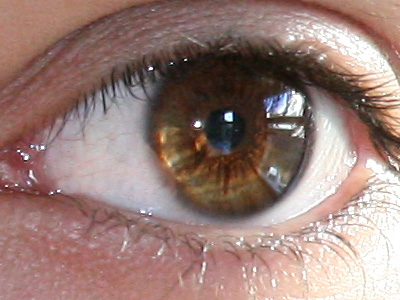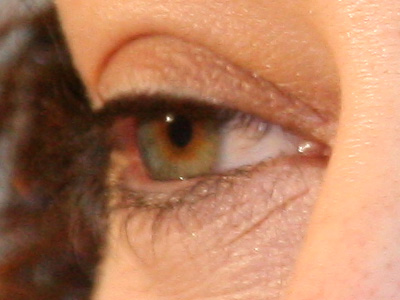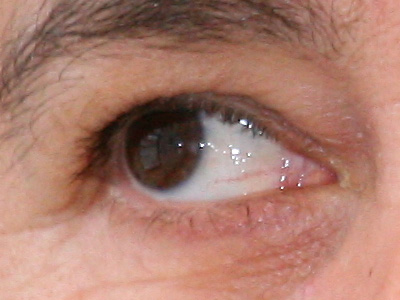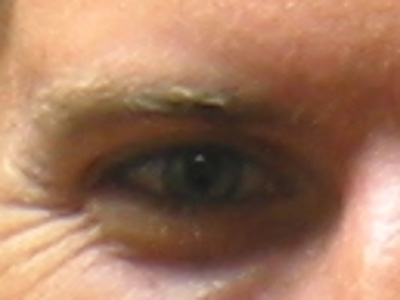|
|
|
hugomcp@di.ubi.pt |
Recent attacks in crowded environments have been increasing the demands in obtaining fully non-cooperative biometric recognition systems, i.e., automata that are able to recognize humans from large distances, outdoors and without requiring subjects cooperation. This ambition dates back to George Orwell’s “Nineteen Eighty-Four” book and evidently broadens the applicability of biometric recognition systems to forensics / criminal seek domains. Using the eyes as main information source to perform recognition has been advocated as an attractive possibility, essentially because - when compared to the face – this region has a smaller sensitivity to changes due to facial expressions and a minor probability of being occluded. Moreover, the ocular region is seen as a trade-off between the face and the iris, which is known by its remarkable recognition effectiveness under controlled acquisition protocols. In this tutorial we will discuss the plausibility of non-cooperative ocular recognition systems. Also, we will provide a comprehensive overview of the main phases behind the development of such type of systems, starting from the data acquisition process up to the decision / recognition modules. For each of these phases, the state-of-the art solutions will be critically analyzed, concluding by the discussion about the major obstacles that remain for obtaining such extremely ambitious kind of biometric recognition systems.
The key idea behind the concept of Non-cooperative recognition is illustrated in the video below. we are interested in performing reliable biometric recognition from images taken in environments that are currently associated to visual surveillance, i.e., outdoor, in completely uncopnstrained lighting conditions and without assuming subjects willingness to be recognized. Why should the ocular region be used for this extremely ambitious type of biometric recognition? 1. It contains the iris, which is a naturally protected internal organ that is visible from the exterior;
2. It supports contactless data acquisition;
3. The iris as a near circular and planar shape that...
3.1. turns easier its segmentation and parameterization;
3.2. enables to compensate for changes in pose;
4.
Most of the iris discriminating information lies in the lowest and
middle-low frequency components, which are the unique that -
reallistically - can be imaged in such unconstrained conditions;
5.
The ocular region is less sensitive to facial expressions (than the
whole face), and has a relatively small probability of being occluded
due to hair, facial hair and clothing.
Summary:
Biometric
recognition essentials from the “performance”, “scale” and “usability”
perspectives. Typical data degradation factors resulting from
unconstrained acquisition protocols. Ethical / privacy issues in
non-cooperative recognition. Privacy-preserving identification.Pattern
Recognition; Biometrics; Artificial Intelligence.
References:
• DARPA. Human identification at-a-distance (Human-ID). http://www.cc.gatech.edu/ cpl/projects/hid/ (retrieved October 5, 2014). • I. Haritaoglu, D.Harwoodand, L.S.Davis. W4:real-time surveillance of people and their activities. IEEE Transactions on Pattern Analysis and Machine Intelligence, vol. 22, no. 8, pag. 809–830, 2000. • A.K. Jain, S. Pankanti, S. Prabhakar, L. Hong and A. Ross. Biometrics: A grand challenge In Proceedings of the 17th International Conference on Pattern Recognition (ICPR 2004), vol. 2, pag. 935–942, August, 2004. • B. Kamgar-Parsi, W. Lawson and B. Kamgar-Parsi. Toward development of a face recognition sys- tem for watchlist surveillance. IEEE Transactions on Pattern Analysis and Machine Intelligence, vol. 33, no. 10, pag. 1925–1937, 2011. • J.R. Matey, O. Naroditsky, K. Hanna, R. Kolczynski, D.J. LoIacono, S. Mangru, M. Tinker, T.M. Zappia, and W.-Y. Zhao. Iris on the move: Acquisition of images for iris recognition in less constrained environments. in Proceedings of the IEEE, vol. 94, no. 11, pag. 1936–1947, 2006. • J. Kizza. Ethical and Social Issues in the Information Age. Text in Computer Science, Springer London Heidelberg New York Dordrecht, 2013.
Summary:
Iris
reflectance: NIR vs. visible wavelengths. Periocular elements. Overview
of periocular recognition algorithms. Recognition robustness against
facial expressions.
References:
• A. D. Bimbo, F. Dini., G. Lisanti, and F. Pernici. Exploiting distinctive visual landmark maps in pan-tilt-zoom camera networks. Computer Vision and Image Understanding, 114(6):611–623, 2010. • H.-C. Choi, U. Park, and A. Jain. PTZ camera assisted face acquisition, tracking & recognition. In Proceedings of the Fourth IEEE International Conference on Biometrics: Theory Applications and Systems, pages 1–6, Washington, USA, 2010. • U. Park, H.-C. Choi, A. Jain, and S.-W. Lee. Face tracking and recognition at a distance: A coaxial and concentric PTZ camera system. IEEE Transactions on Information Forensics and Security, 8(10):1665–1677, 2013. • F. Wheeler, R. Weiss, and P. Tu. Face recognition at a distance system for surveillance applications. In Proceedings of the Fourth IEEE International Conference on Biometrics: Theory Applications and Systems, pages 1–8, Washington, DC, 2010.
Summary:
Master-slave acquisition architecture. Background subtraction. Human detection and tracking.
References:
• A. D. Bimbo, F. Dini., G. Lisanti, and F. Pernici. Exploiting distinctive visual landmark maps in pan-tilt-zoom camera networks. Computer Vision and Image Understanding, 114(6):611–623, 2010. • H.-C. Choi, U. Park, and A. Jain. PTZ camera assisted face acquisition, tracking & recognition. In Proceedings of the Fourth IEEE International Conference on Biometrics: Theory Applications and Systems, pages 1–6, Washington, USA, 2010. • U. Park, H.-C. Choi, A. Jain, and S.-W. Lee. Face tracking and recognition at a distance: A coaxial and concentric PTZ camera system. IEEE Transactions on Information Forensics and Security, 8(10):1665–1677, 2013. • F. Wheeler, R. Weiss, and P. Tu. Face recognition at a distance system for surveillance applications. In Proceedings of the Fourth IEEE International Conference on Biometrics: Theory Applications and Systems, pages 1–8, Washington, DC, 2010.
Summary:
Real-time head detection. Eyes detection. Head pose estimation.
References:
• R. Luque, E. Domnguez, E. Palomo and J. Muoz. A Neural Network Approach for Video Object Segmentation in Traffic Surveillance. In Proceedings of the International Conference on Image Analysis and recognition (ICIAR 2008), LNCS, vol. 5112, pag. 151–158, 2008. • L. Maddalena and A Petrosino. A Self-Organizing Approach to Background Subtraction for Visual Surveillance Applications. IEEE Transactions on Image Processing, vol. 17, no. 7, pag. 1168–1177, 2008. • K. Mikolajczyk, C. Schmid and A.Zisserman. Human Detection Based on a Probabilistic Assembly of Robust Part Detectors. In Proceedings of the European Conference on Computer Vision (ECCV 2004), LNCS, vol. 3021, pag. 69–82, 2004. • E. Murphy-Chutorian and M. Trivedi. Head Pose estimation in Computer Vision: A Survey. IEEE Transactions on Pattern Analysis and Machine Intelligence, vol. 31, no. 4, pag. 607–626, 2009.
Summary:
Segmentation
of visible wavelength iris images. Issues in the segmentation of NIR
vs. visible wavelength images. Non-holistic periocular recognition:
segmentation of periocular elements.
References:
• Albiol, L. Torres and E. Delp. Optimum color spaces for skin detection. In Proceedings of the International Conference on Image Processing, vol. 1, pag. 122–124, 2001. • H. Proença. Iris recognition: On the segmentation of degraded images acquired in the visible wavelength. IEEE Transactions on Pattern Analysis and Machine Intelligence, vol.32, no.8, pag. 1502–1516, 2004. • Hugo Proença, João C. Neves, Gil Santos; "Segmenting the Periocular Region using a Hierarchical Graphical Model Fed by Texture / Shape Information and Geometrical Constraints" in Proceedings of the International Joint Conference on Biometrics - IJCB 2014, pag. 1-7, Clearwater, Florida, U.S.A., September 29- October 2, Digital Object Identifier: 10.1109/BTAS.2014.6996228, 2014.
Summary:
Iris
recognition in visible wavelengths: multi-lobe differential vs. Gabor
filters. Information lost in iris codes quantization. Non-holistic
periocular recognition. Sclera recognition.
References:
• S. Crihalmeanu and A. Ross. Multispectral scleral patterns for ocular biometric recognition. Pattern Recognition Letters, vol. 33, no. 14, pag. 1860–1869, 2012. • Kumar and T-S. Chan. Iris recognition using quaternionic sparse orientation code (QSOC). in Proceedings of the Computer Vision and Pattern Recognition Workshops, pag. 59–64, 2012. • K.Oh, B-S.Oh, K-A.Toh, W-Y.Yau and H-L.Eng. Combining sclera and periocular features for multi-modal identity verification. Neurocomputing, vol. 128, pag. 185–198, 2014. • U. Park, R. Jilela, A. Ross and A.K. Jain. Periocular Biometrics in the Visible Spectrum. IEEE Transactions on Information Forensics and Security, vol. 6, no. 1, pages 96–106, 2011. • Hugo Proença; Ocular Biometrics by Score-Level Fusion of Disparate Experts, IEEE Transactions on Image Processing, volume 23, issue 12, pag. 5082-5093, ISSN 1057-7149, Digital Object Identifier 10.1109/TIP.2014.2361285, 2014.
Summary:
Multi-biometrics.
Exogenous independence. Recognition in large-scale environments.
Privacy-preserving: watch list identification.
References:
• Kevin W. Bowyer. Face Recognition Technology and the Security Versus Privacy Tradeoff. IEEE Technology and Society, Spring 2004, pag. 9-20. • Kevin W. Bowyer. ``Star Wars'' Revisited - A Continuing Case Study In Ethics and Safety-Critical Software, IEEE Technology and Society 21 (1), Spring 2002, pag. 13-26.
|
|




